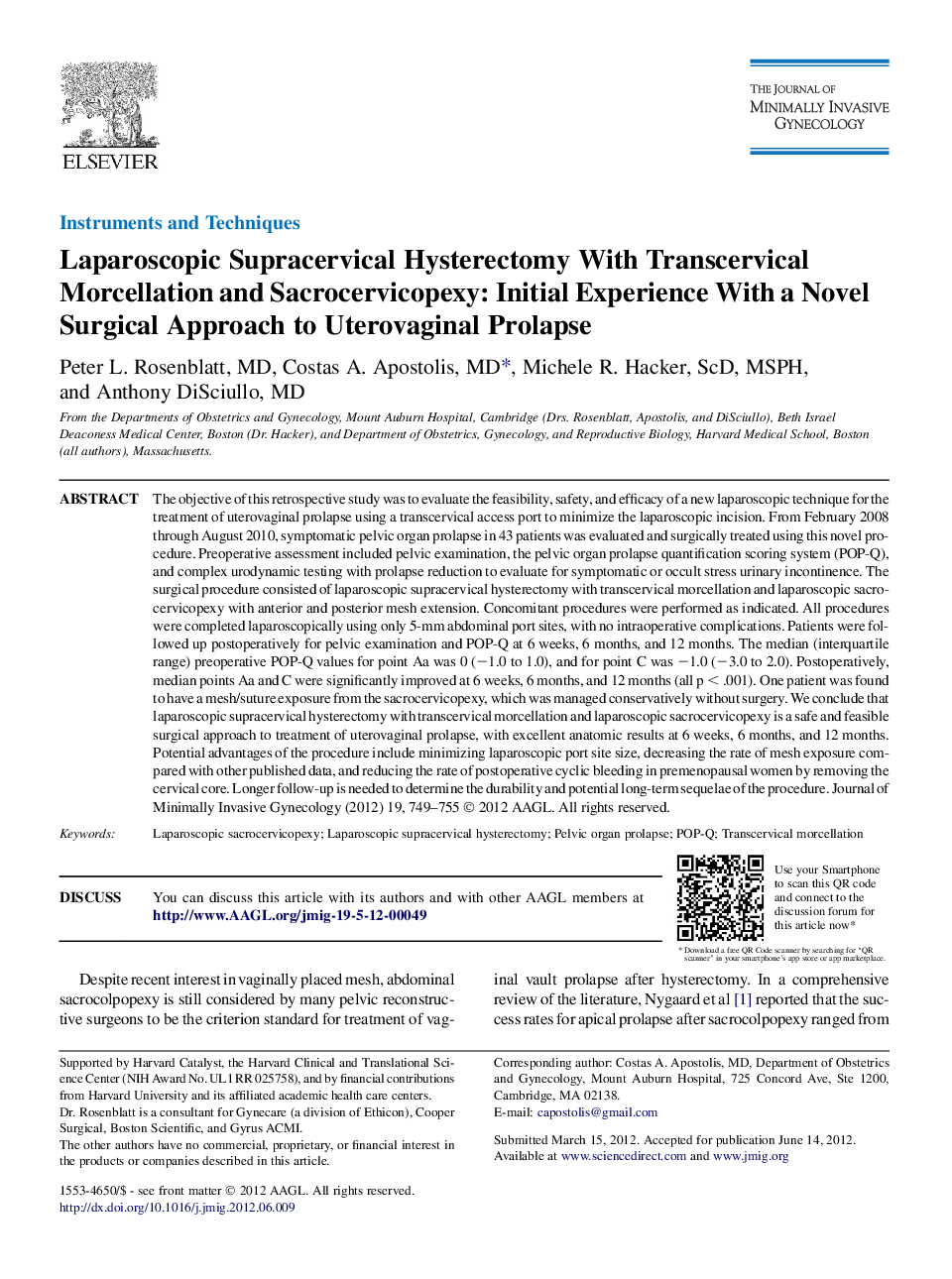| Article ID | Journal | Published Year | Pages | File Type |
|---|---|---|---|---|
| 3958530 | Journal of Minimally Invasive Gynecology | 2012 | 7 Pages |
The objective of this retrospective study was to evaluate the feasibility, safety, and efficacy of a new laparoscopic technique for the treatment of uterovaginal prolapse using a transcervical access port to minimize the laparoscopic incision. From February 2008 through August 2010, symptomatic pelvic organ prolapse in 43 patients was evaluated and surgically treated using this novel procedure. Preoperative assessment included pelvic examination, the pelvic organ prolapse quantification scoring system (POP-Q), and complex urodynamic testing with prolapse reduction to evaluate for symptomatic or occult stress urinary incontinence. The surgical procedure consisted of laparoscopic supracervical hysterectomy with transcervical morcellation and laparoscopic sacrocervicopexy with anterior and posterior mesh extension. Concomitant procedures were performed as indicated. All procedures were completed laparoscopically using only 5-mm abdominal port sites, with no intraoperative complications. Patients were followed up postoperatively for pelvic examination and POP-Q at 6 weeks, 6 months, and 12 months. The median (interquartile range) preoperative POP-Q values for point Aa was 0 (−1.0 to 1.0), and for point C was −1.0 (−3.0 to 2.0). Postoperatively, median points Aa and C were significantly improved at 6 weeks, 6 months, and 12 months (all p < .001). One patient was found to have a mesh/suture exposure from the sacrocervicopexy, which was managed conservatively without surgery. We conclude that laparoscopic supracervical hysterectomy with transcervical morcellation and laparoscopic sacrocervicopexy is a safe and feasible surgical approach to treatment of uterovaginal prolapse, with excellent anatomic results at 6 weeks, 6 months, and 12 months. Potential advantages of the procedure include minimizing laparoscopic port site size, decreasing the rate of mesh exposure compared with other published data, and reducing the rate of postoperative cyclic bleeding in premenopausal women by removing the cervical core. Longer follow-up is needed to determine the durability and potential long-term sequelae of the procedure.
